
Group f/64 or f.64 was a group founded by seven American 20th-century San Francisco Bay Area photographers who shared a common photographic style characterized by sharply focused and carefully framed images seen through a particularly Western (U.S.) viewpoint. In part, they formed in opposition to the pictorialist photographic style that had dominated much of the early 20th century, but moreover, they wanted to promote a new modernist aesthetic that was based on precisely exposed images of natural forms and found objects.

Edward Henry Weston was an American photographer. He has been called "one of the most innovative and influential American photographers" and "one of the masters of 20th century photography." Over the course of his 40-year career Weston photographed an increasingly expansive set of subjects, including landscapes, still lifes, nudes, portraits, genre scenes, and even whimsical parodies. It is said that he developed a "quintessentially American, and especially Californian, approach to modern photography" because of his focus on the people and places of the American West. In 1937 Weston was the first photographer to receive a Guggenheim Fellowship, and over the next two years he produced nearly 1,400 negatives using his 8 × 10 view camera. Some of his most famous photographs were taken of the trees and rocks at Point Lobos, California, near where he lived for many years.

André Kertész, born Andor Kertész, was a Hungarian-born photographer known for his groundbreaking contributions to photographic composition and the photo essay. In the early years of his career, his then-unorthodox camera angles and style prevented his work from gaining wider recognition. Kertész never felt that he had gained the worldwide recognition he deserved. Today he is considered one of the seminal figures of 20th century photography.
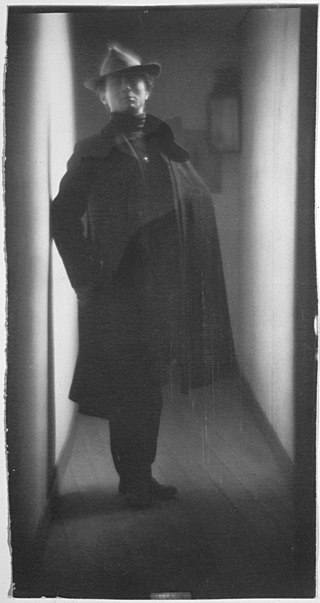
Edward Jean Steichen was a Luxembourgish American photographer, painter, and curator. He is considered among the most important figures in the history of photography.

Paul Strand was an American photographer and filmmaker who, along with fellow modernist photographers like Alfred Stieglitz and Edward Weston, helped establish photography as an art form in the 20th century. In 1936, he helped found the Photo League, a cooperative of photographers who banded together around a range of common social and creative causes. His diverse body of work, spanning six decades, covers numerous genres and subjects throughout the Americas, Europe, and Africa.

Tina Modotti was an Italian American photographer, model, actor, and revolutionary political activist for the Comintern. She left her native Italy in 1913 and emigrated to the United States, where she settled in San Francisco with her father and sister. In San Francisco, Modotti worked as a seamstress, model, and theater performer and, later, moved to Los Angeles where she worked in film. She later became a photographer and essayist. In 1922 she moved to Mexico, where she became an active member of the Mexican Communist Party.

Minor Martin White was an American photographer, theoretician, critic, and educator.

Margrethe Mather was an American photographer. She was one of the best known female photographers of the early 20th century. Initially she influenced and was influenced by Edward Weston while working in the pictorial style, but she independently developed a strong eye for patterns and design that transformed some of her photographs into modernist abstract art. She lived a mostly uncompromising lifestyle in Los Angeles that alternated between her photography and the creative Hollywood community of the 1920s and 1930s. In later life she abandoned photography, and she died unrecognized for her photographic accomplishments.
"in artistic matters Margaret was, of course, the teacher, Edward (Weston) the pupil" — Imogen Cunningham

Theodore Brett Weston was an American photographer.

Sonya Noskowiak was a 20th-century German-American photographer and member of the San Francisco photography collective Group f/64 that included Ansel Adams and Edward Weston. She is considered an important figure in one of the great photographic movements of the twentieth century. Throughout her career, Noskowiak photographed landscapes, still lifes, and portraits. Her most well-known, though unacknowledged, portraits are of the author John Steinbeck. In 1936, Noskowiak was awarded a prize at the annual exhibition of the San Francisco Society of Women Artists. She was also represented in the San Francisco Museum of Art’s “Scenes from San Francisco” exhibit in 1939. Ten years before her death, Noskowiak's work was included in a WPA exhibition at the Oakland Museum in Oakland, California.
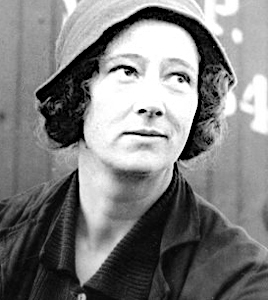
Consuelo Delesseps Kanaga was an American photographer and writer who became well known for her photographs of African-Americans.
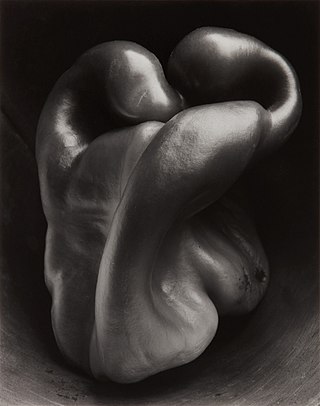
Pepper No. 30 is a black and white photograph and is one of the best-known photographs taken by Edward Weston. It depicts a solitary green pepper in rich black-and-white tones, with strong illumination from above.

Nude is a black and white photograph taken by Edward Weston in 1936. It shows an apparently nude woman with her arms wrapped around her legs while she sits on a blanket in bright sunlight against a darkened doorway. The dynamic balance of the light and dark accentuate the curves and angles of the woman's body; at the same time her face and all but the slightest hint of her pubic area are hidden from view, requiring the viewer to concentrate on her arms, legs, feet and hands. It is an image of a nude that concentrates solely on the forms of the body rather than the sexuality. The model was his muse and assistant, Charis Wilson, whom he married a year later.
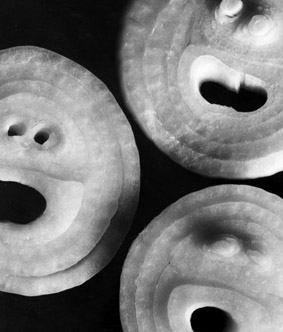
The Neues Sehen, also known as New Vision or Neue Optik, was a movement, not specifically restricted to photography, which was developed in the 1920s. The movement was directly related to the principles of the Bauhaus. Neues Sehen considered photography to be an autonomous artistic practice with its own laws of composition and lighting, through which the lens of the camera becomes a second eye for looking at the world. This way of seeing was based on the use of unexpected framings, the search for contrast in form and light, the use of high and low camera angles, etc. The movement was contemporary with New Objectivity with which it shared a defence of photography as a specific medium of artistic expression, although Neues Sehen favoured experimentation and the use of technical means in photographic expression.

Dody Weston Thompson was a 20th-century American photographer and chronicler of the history and craft of photography. She learned the art in 1947 and developed her own expression of “straight” or realistic photography, the style that emerged in Northern California in the 1930s. Dody worked closely with contemporary icons Edward Weston, Brett Weston and Ansel Adams during the late 1940s and through the 1950s, with additional collaboration with Brett Weston in the 1980s.
Margaret Woodward Weston, known as "Maggi", is an American photography collector and promoter who started one of the first commercial art galleries in the United States devoted solely to photography.
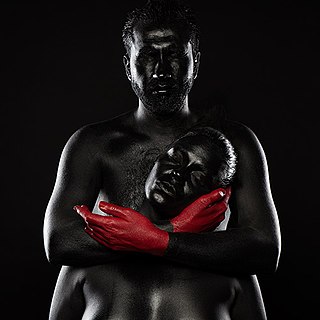
Low-key photography is a genre of photography consisting of shooting dark-colored scenes by lowering or dimming the "key" or front light illuminating the scene, and emphasizing natural or artificial light only on specific areas in the frame. This photographic style is usually used to create a mysterious atmosphere, that only suggests various shapes, often graphic, letting the viewer experience the photograph through subjective interpretation and often implies painting objects or the human body with black non-toxic dyes or pigments.

Steel: Armco, Middletown, Ohio is a black and white photograph taken by American photographer Edward Weston in 1922.

Hyères, France is a black and white photograph taken by Henri Cartier-Bresson in 1932. It is one of the photographs from the year when he started taking photography more professionally. He took then many pictures in France and in other countries, like Italy, Spain, Morocco and Mexico, with his portable Leica camera.
Two Shells, also known as Shells, is a black and white photograph taken by American photographer Edward Weston, in 1927. It was part of a series containing 26 photographs of sea shells from the same year, including Weston's famous Nautilus.


















